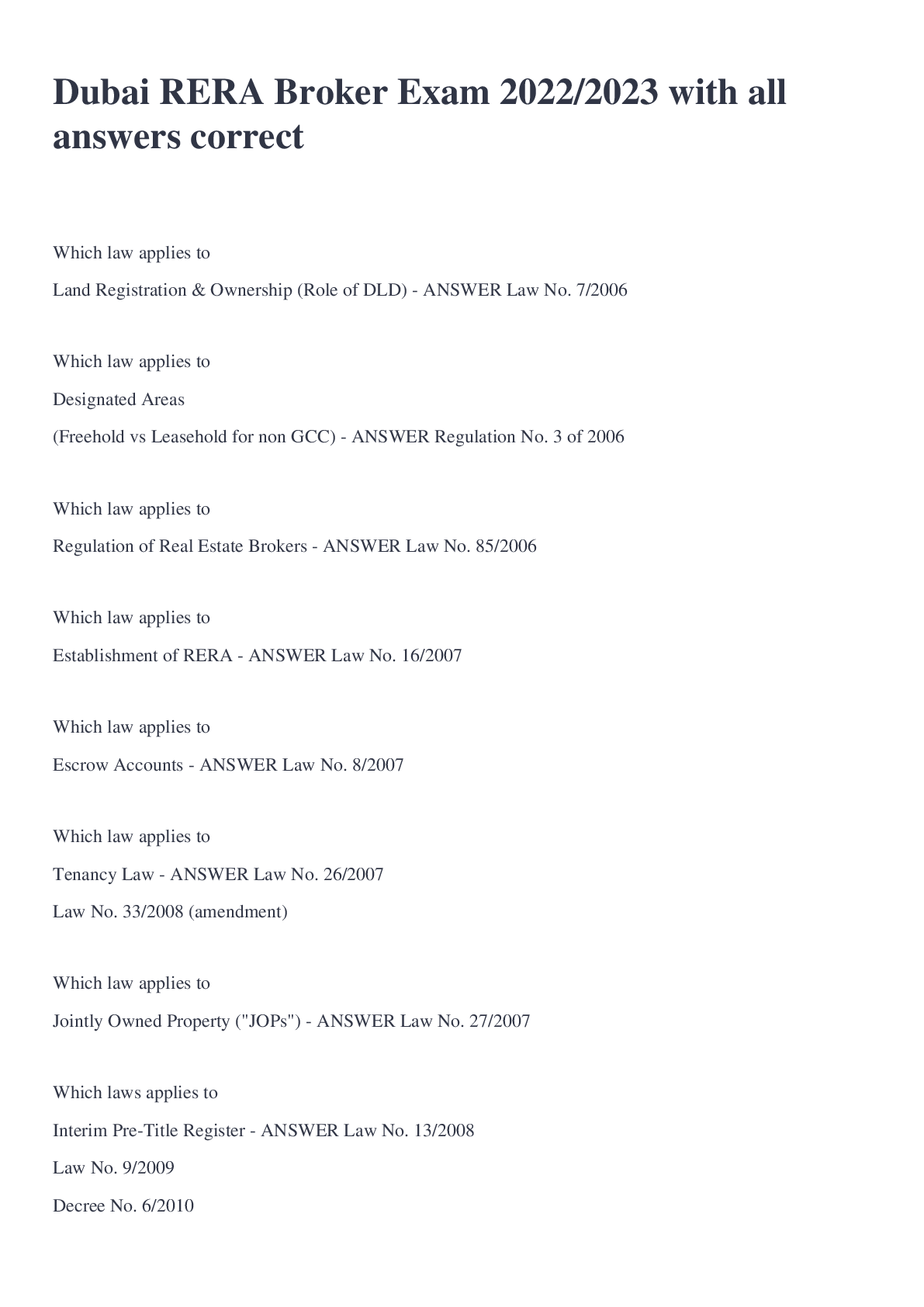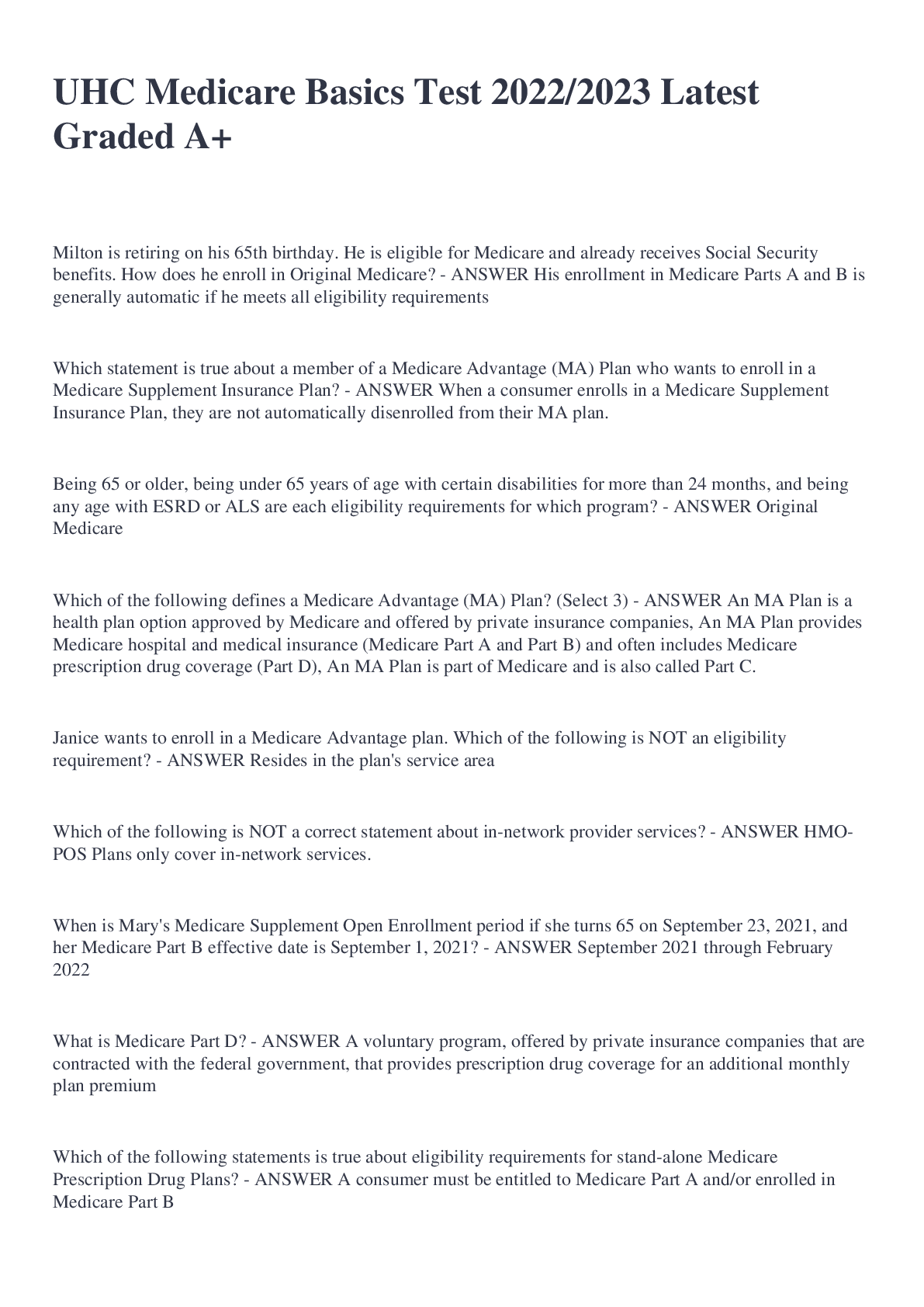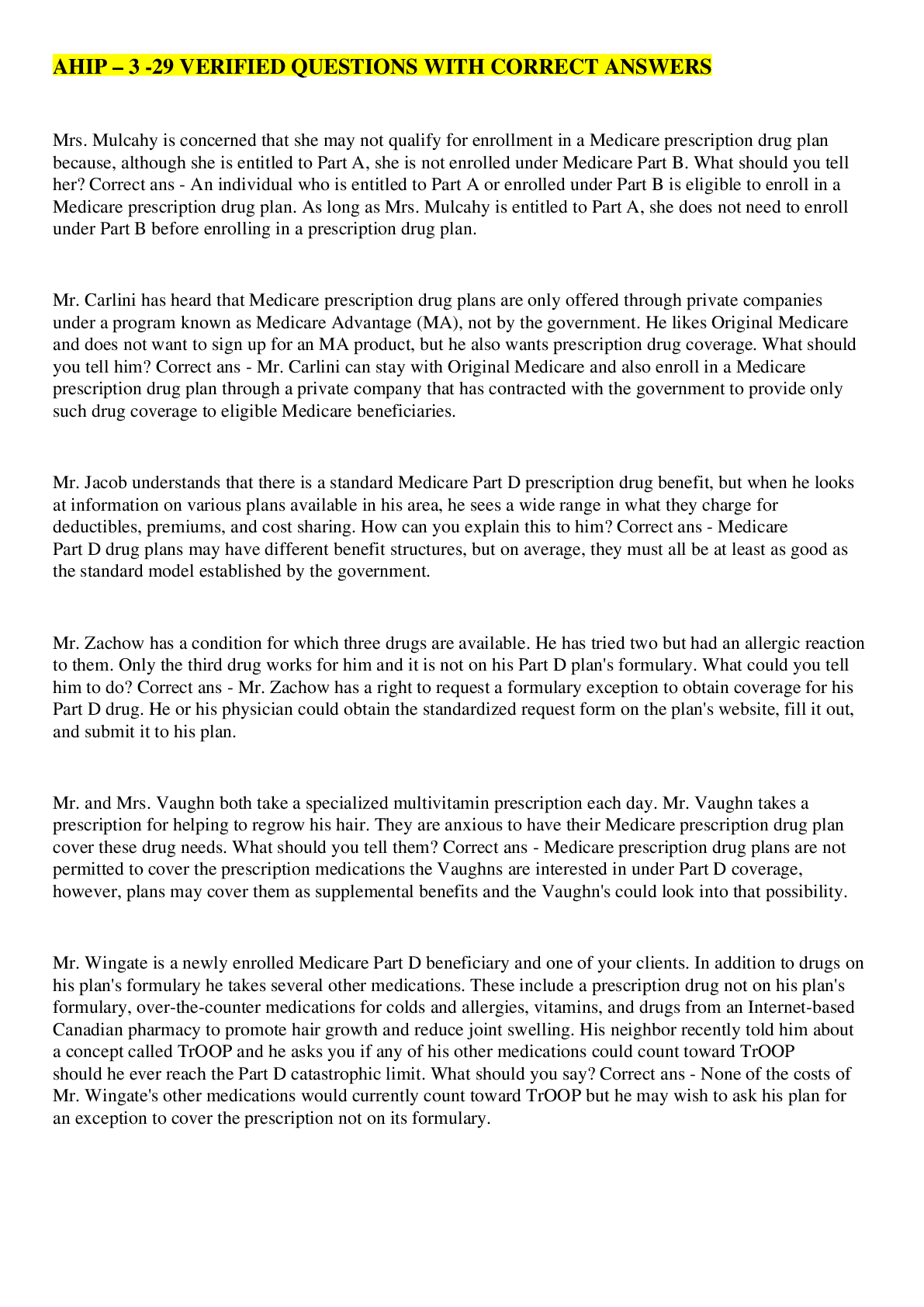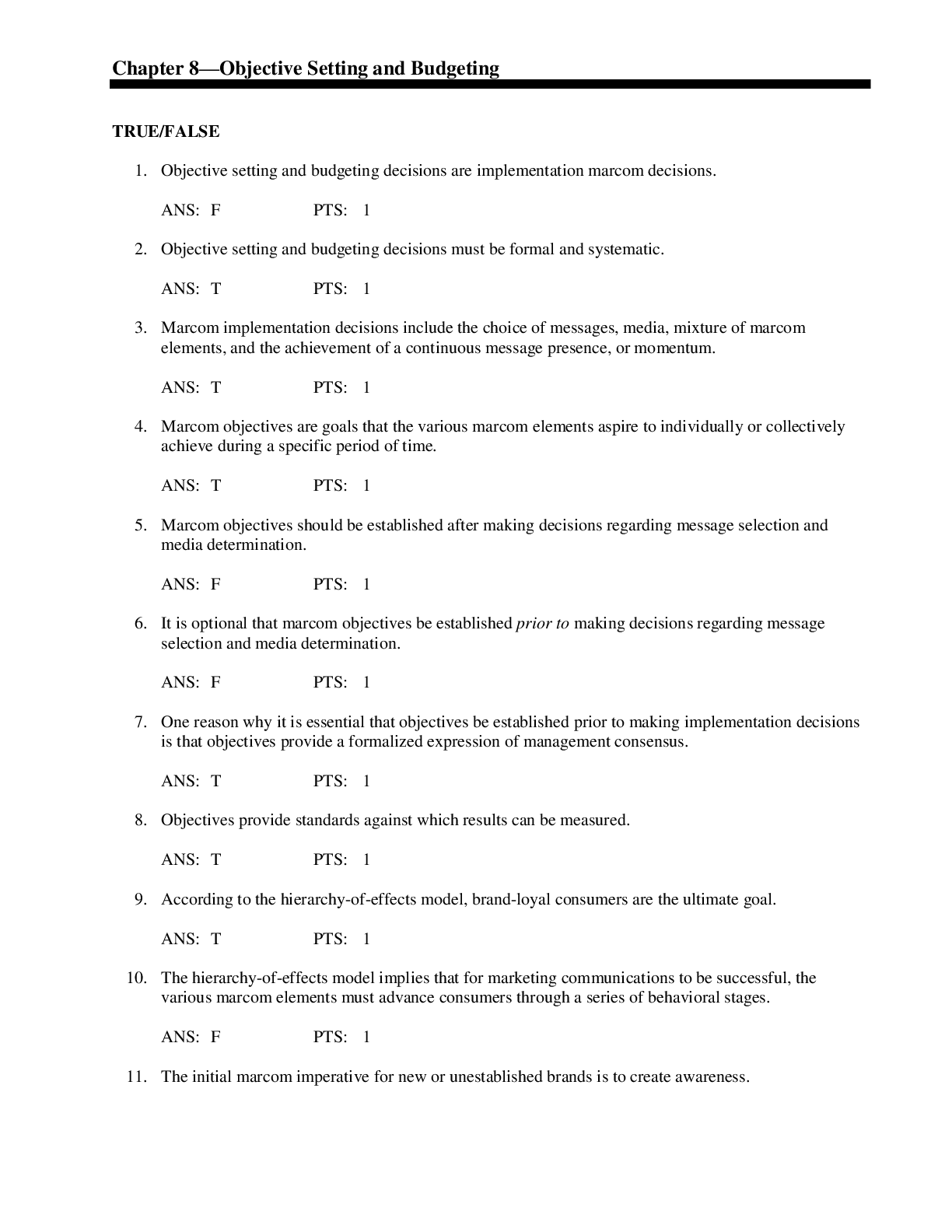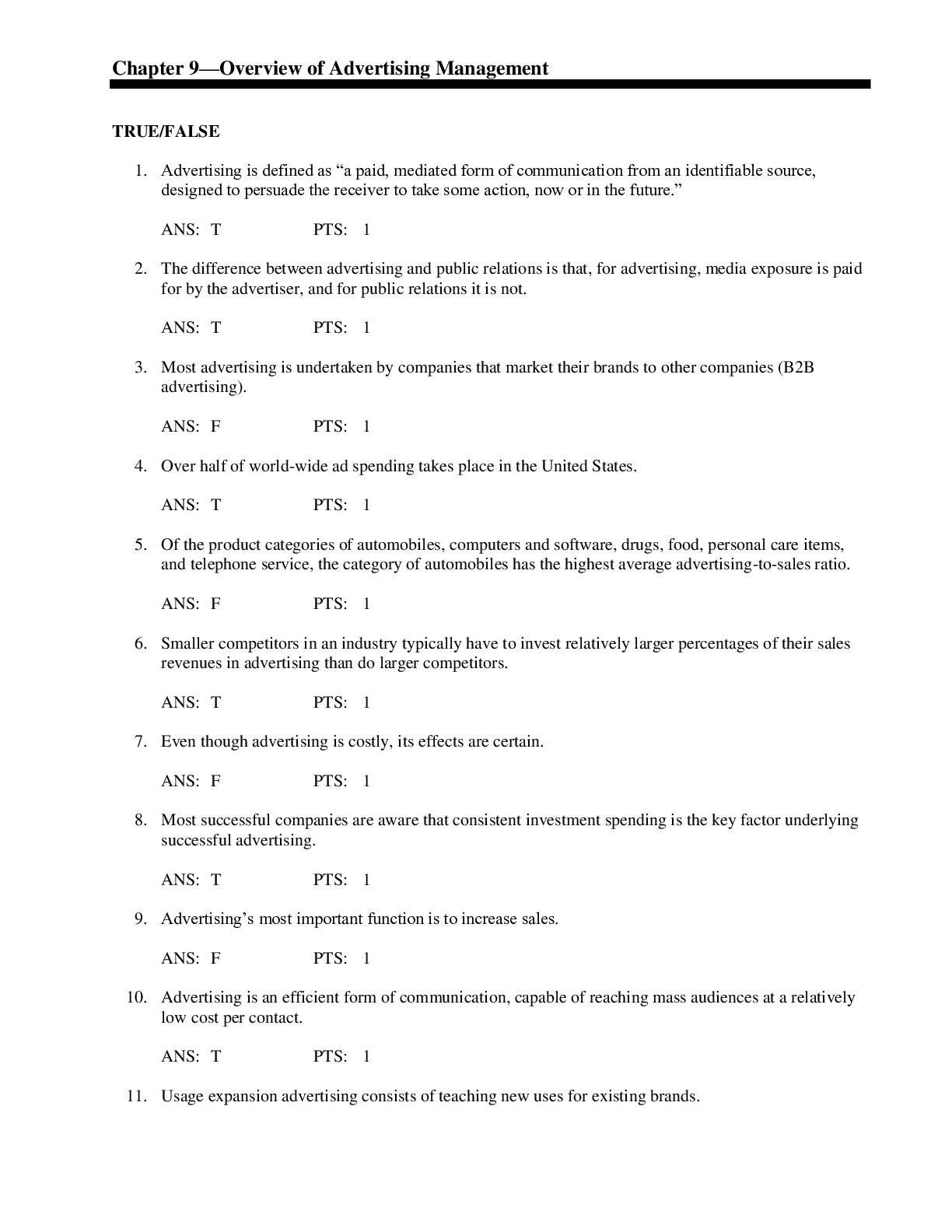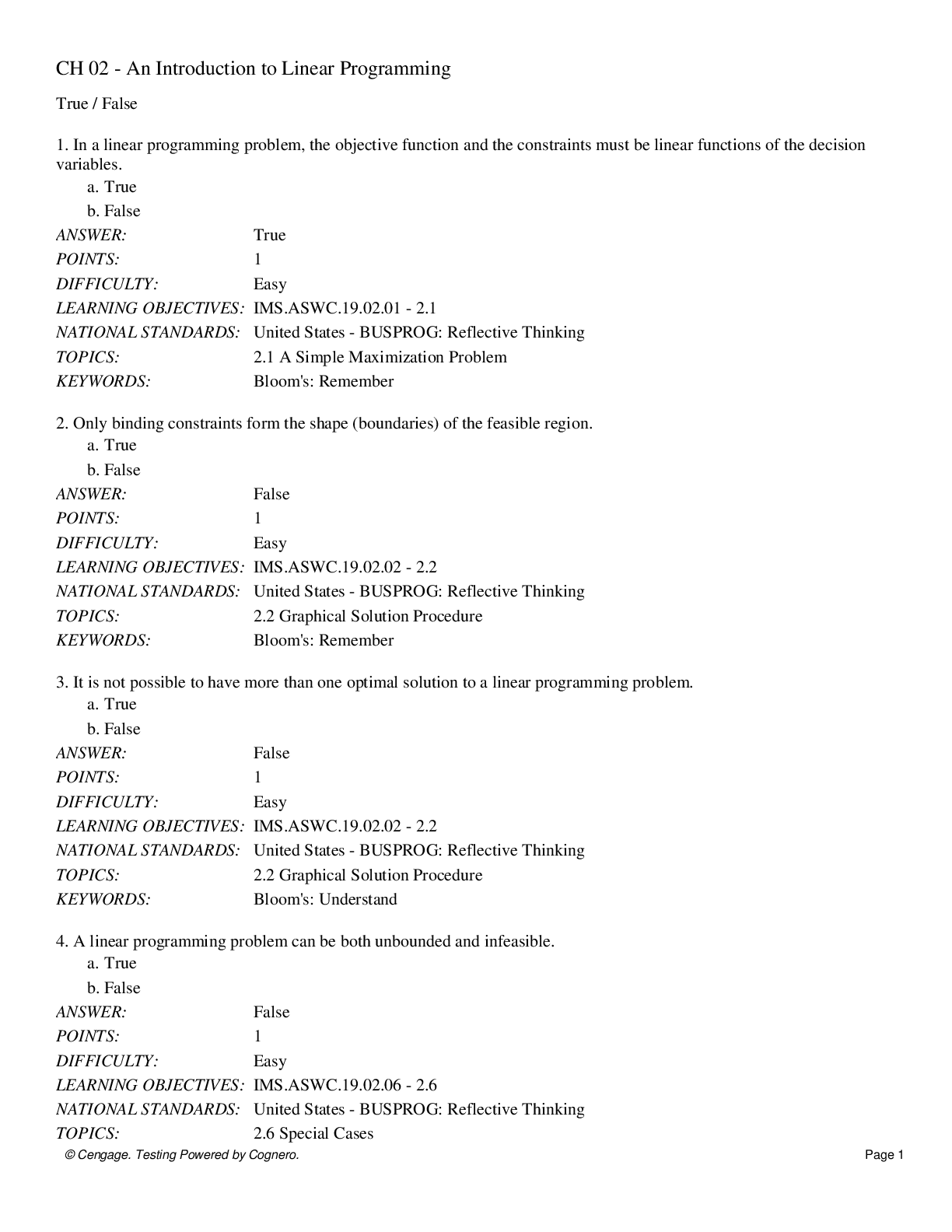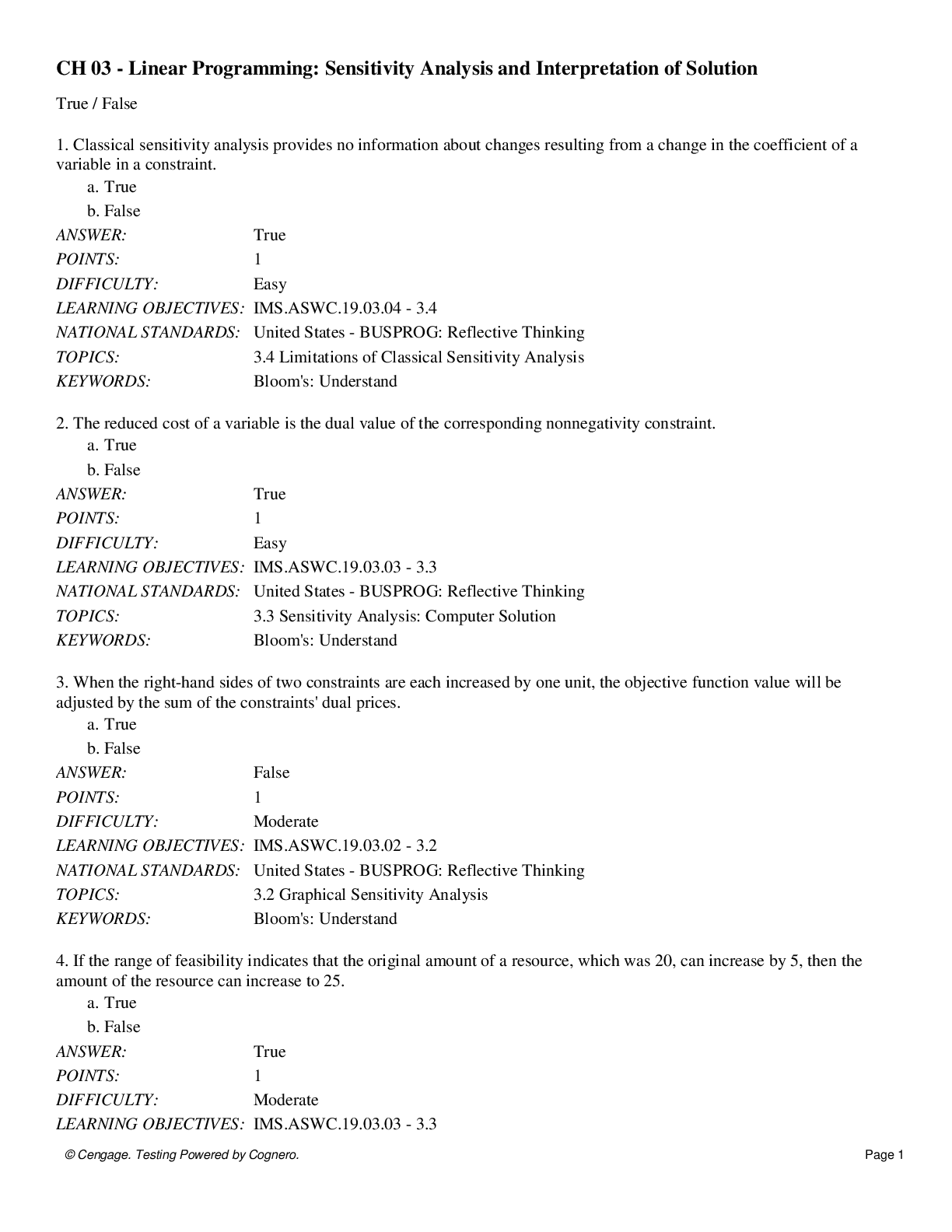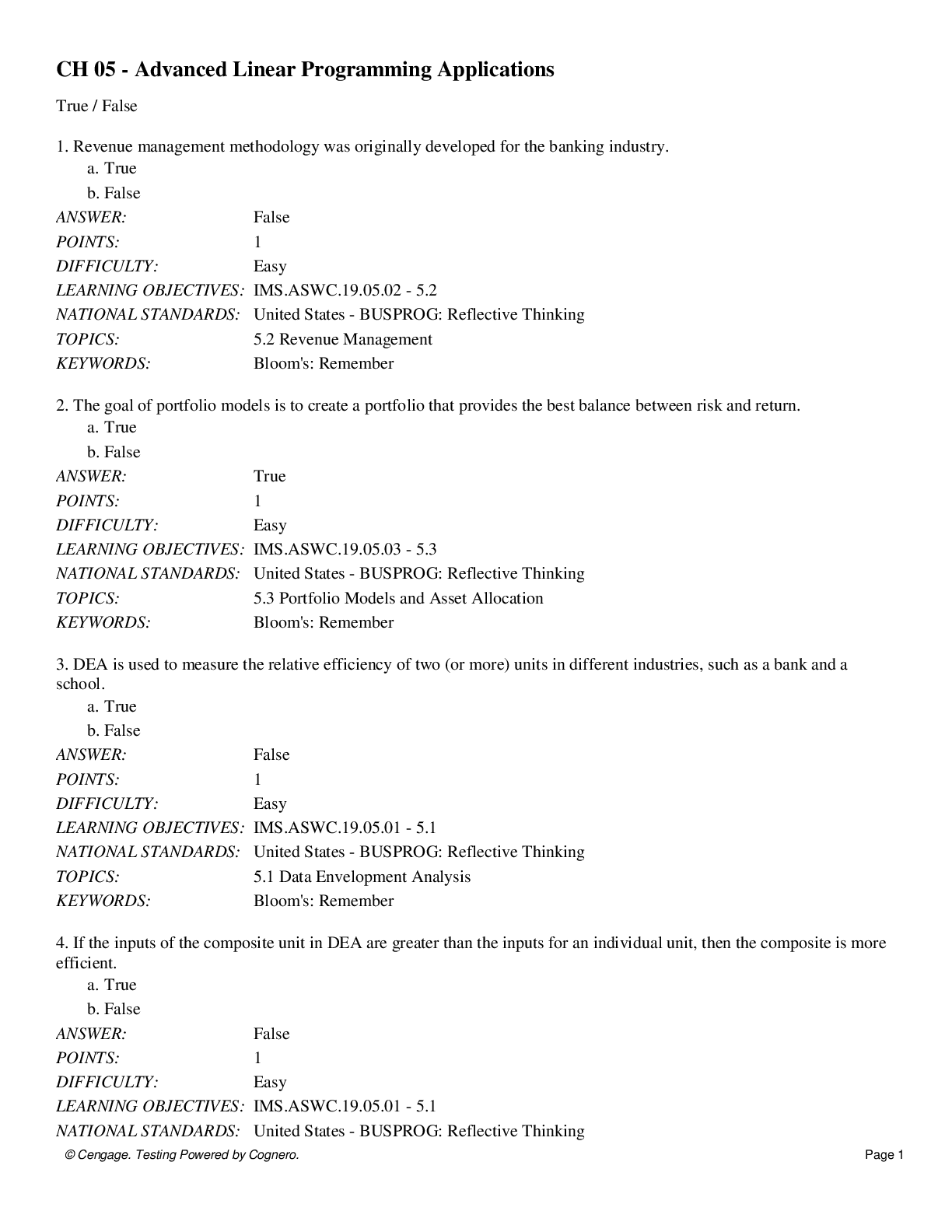*NURSING > QUESTIONS & ANSWERS > NUR 211 Neurological Disorders NCLEX Questions and Answers Graded A+ (All)
NUR 211 Neurological Disorders NCLEX Questions and Answers Graded A+
Document Content and Description Below
A nurse would use which standardized tool as a guide in assessing a client with a head injury and increased intracranial pressure (ICP)? A. Snellen chart B. Pulse oximetry graph C. Visual Analogue... Scale D. Glasgow Coma Scale - ANSWER D. GCS is a method of assessing consciousness. The Visual Analogue Scale can be used to determine pain rating. A pulse oximetry graph would be used to document pulse ox readings. A Snellen chart would be used to assess visual acuity. A nurse is caring for a client with a neurological disorder is planning care to maintain nutritional status. The nurse is concerned about the client's swallowing ability. Which of the following food items would the nurse plan to avoid in this client's diet? A. Spinach B. Custard C. Scrambled eggs D. Mashed potatoes - ANSWER A. Flavorful, warm, or well-chilled foods with texture stimulate the swallowing reflex. Soft and semisoft foods, such as custards or puddings, egg dishes, and potatoes, are usually effective Raw vegetables, chunky vegetables, such as diced beets, and stringy vegetables, such as spinach, corn, and peas are foods commonly excluded from the diet of a client with a poor swallowing reflex. A client experiences an episode of Bell's palsy and complains about increasing clumsiness. The nurse should prepare the client for which diagnostic study(ies) to determine the cause of the assessment findings? A. Serum sodium level B. Cerebral angiography C. Lumbar puncture (LP) D. Oculovestibular reflex E. Electroencephalogram F. Computed tomography - ANSWER B, C, F The most sensitive and specific tests that provide relevant diagnostic information for these types of pathology are cerebral angiography, LP, and CT. The imaging studies potentially illustrate central nervous system lesions and the LP enables the care provider to analyze cerebrospinal fluid for immunoglobulins (antibodies) and other components. Because the client's neurological problem unlikely to be metabolic, the sodium level is unlikely to be helpful (option A). Usually electroencephalogram and oculovestibular reflex are tests that are reserved to evaluate electrical activity of the brain in seizure disorders and to determine brain death (options D and E). In addition, the oculovestibular reflex is not performed on a client who is conscious. A clients with Parkinson's disease is experiencing tremors, rigidity, and bradykinesia. The nurse anticipates that the physician will prescribe which medication to control these symptoms? A. Phenytoin (Dilantin) B. Carbidopa-levodopa (Sinemet) C. Pyridostigmine (Mestinon) D. Warfarin (Coumadin) - ANSWER B. Carbidopa-levodopa is an antiparkinsonian agent and is used to control symptoms of Parkinson's disease. Phenytoin is an anticonvulsant and antidysrhythmic. Pyridostigmine is a cholinergic medication often used to treat myasthenia gravis. Warfarin is an anticoagulant. A client recovering from a craniotomy complains of a "runny nose". Which of the following nursing actions should be immediately implemented? A. Notify the physician B. Provide the client with soft tissues C. Monitor the client for signs of a cold D. Tell the client to use soft tissues to soak up the drainage - ANSWER A. If the client has sustained a craniocerebral injury or is recovering from a craniotomy, careful observation of any drainage from the eyes, ears, nose or traumatic area is critical because this may indicate leakage of cerebrospinal fluid. Cerebrospinal fluid is colorless and generally nonpurulent, and its presence indicates a serious breach of cranial integrity. Any suspicious drainage should be reported to the physician immediately. A client is being prepared for lumbar puncture (LP). The nurse assists the client into which of the following positions for the procedure? A. Prone, in slight Trendelenburg's position B. Prone, with a pillow under the abdomen C. Side-lying, with the legs pulled up and the head bent down onto the chest. D. Side-lying, with a pillow under the hip - ANSWER C. The client undergoing LP is positioned lying on the side, with the legs pulled up against the abdomen and with the head bent down toward the chest. This position helps widen the spaces between the vertebrae. A client with multiple sclerosis is experiencing muscle weakness, spasticity and an ataxic gait. On the basis of this information, the nurse would formulate which of the following nursing diagnoses for the client? A. Self-care deficit B. Risk for activity intolerance C. Impaired tissue integrity D. Impaired physical mobility - ANSWER D. NANDA Impaired Physical Mobility is defined "a state in which the individual experiences a limitation of ability for independent physical movement." The client's [Show More]
Last updated: 1 year ago
Preview 1 out of 4 pages
Instant download
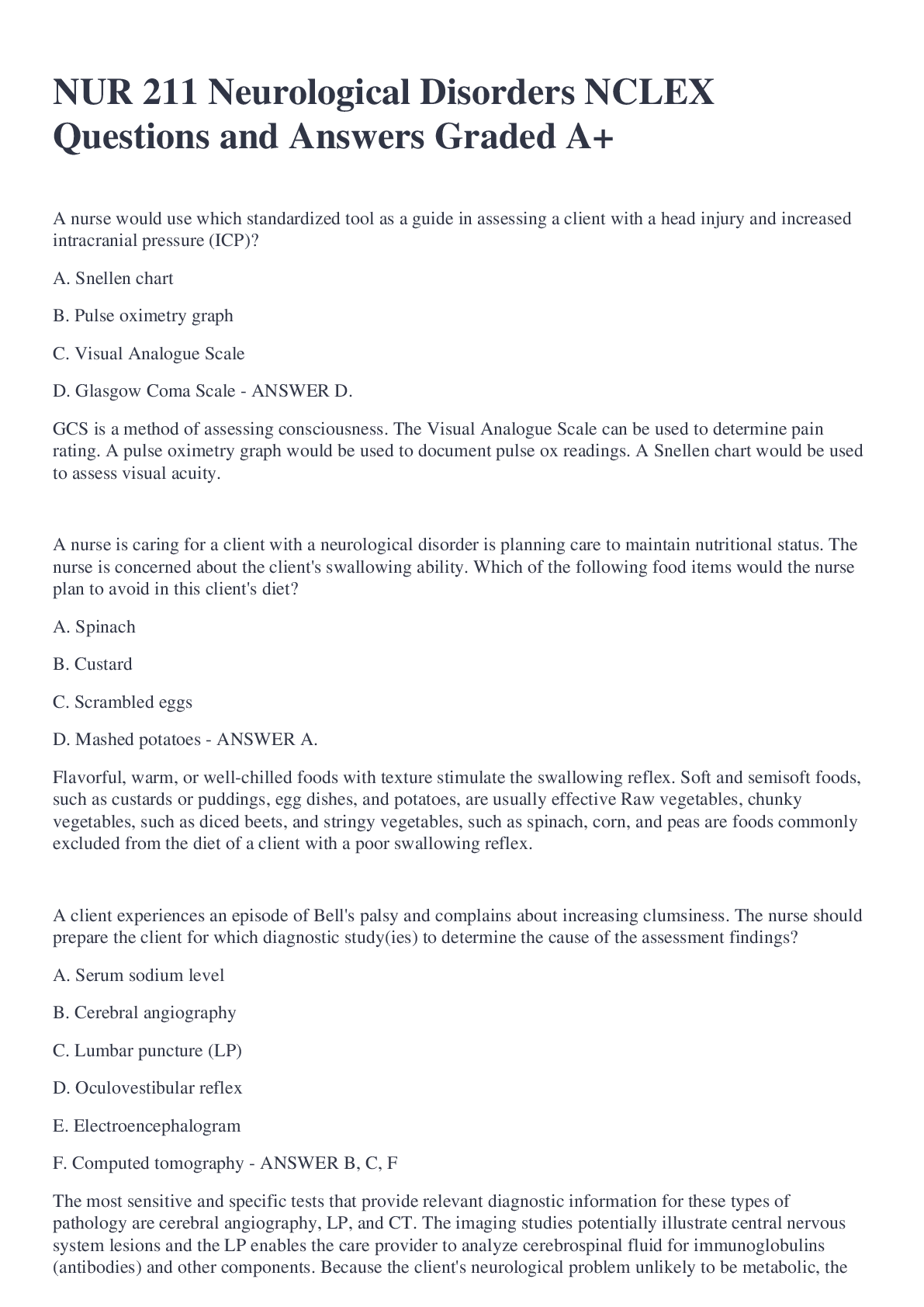
Buy this document to get the full access instantly
Instant Download Access after purchase
Add to cartInstant download
Reviews( 0 )
Document information
Connected school, study & course
About the document
Uploaded On
Oct 13, 2022
Number of pages
4
Written in
Additional information
This document has been written for:
Uploaded
Oct 13, 2022
Downloads
0
Views
27

